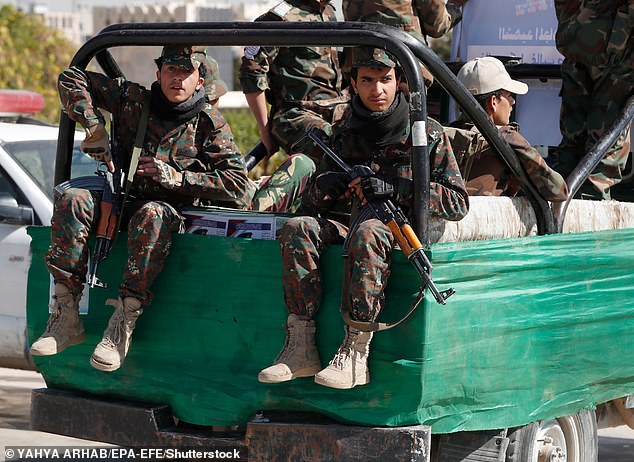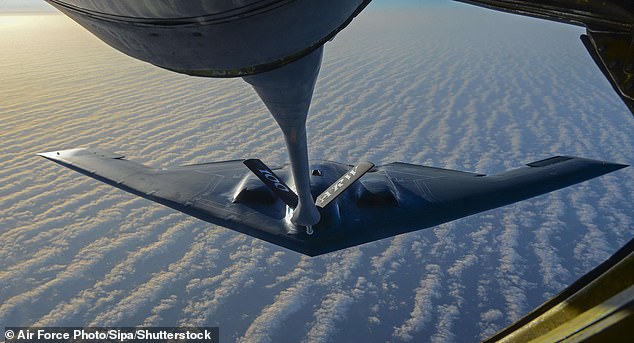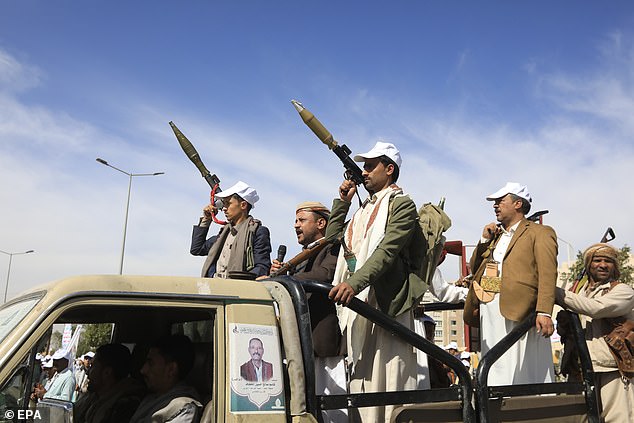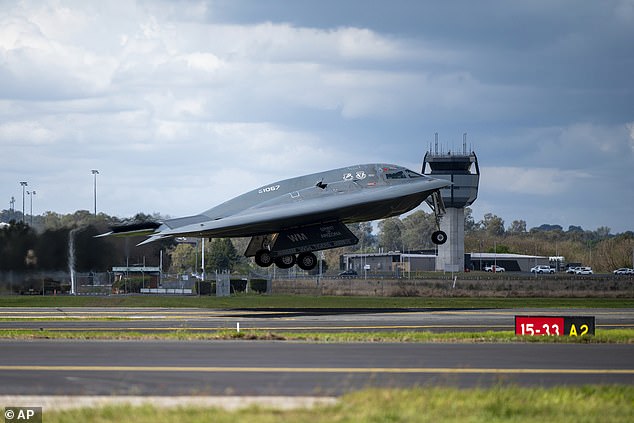US B-2 stealth bombers attacked Houthi weapons storage facilities in Yemen on Thursday morning, according to the Pentagon.
U.S. Air Force B-2 Spirit strategic bombers conducted precision strikes against “several of the Houthi underground facilities housing various weapons components of the type the Houthis have used to attack civilian and military vessels.” throughout the region,” said U.S. Secretary of Defense Lloyd. Austin said in a statement.
The Houthi-run Al Masirah television network reported 15 attacks at dawn on Thursday local time, targeting sites north and south of the capital Sanaa, as well as further north in Saada governorate, a stronghold of the Houthis.
The B-2 bombers conducted strikes against five underground weapons storage sites, Austin said, adding that the use of the long-range stealth bomber demonstrates “the United States’ global strike capabilities to take action against these targets when necessary, anytime, anywhere.”
The US Air Force added: “The Houthis’ unlawful attacks continue to disrupt the free flow of international commerce, threaten an environmental catastrophe, and put the lives of innocent civilians and the lives of US forces at risk. and its partners”.
American long-range B-2 stealth bombers launched airstrikes early on October 17 against underground bunkers used by Yemen’s Houthi rebels. Pictured: A U.S. Air Force B-2 Spirit stealth bomber takes off from a Royal Australian Air Force base in Amberley, Australia, Sept. 11, 2024.

Houthi attacks in the Red Sea have forced major shipping companies to avoid the waterway, affecting international trade. Pictured: Houthi rebel fighters march during a rally in support of Palestinians in the Gaza Strip and against US attacks in Yemen on the outskirts of Sana’a on January 22, 2024.

In addition to direct attacks on ships in the Red Sea, the Houthis have fired several missiles and drones directly at Israel. Pictured: Houthi fighters riding a truck patrol during a mass funeral for 29 Houthi fighters killed in recent fighting against Saudi-backed government forces, in Sana’a, Yemen, January 10, 2022.
The B-2s flew to their targets from Whiteman Air Force Base in the US state of Missouri, according to a Bloomberg report.
Each B-2 is capable of carrying up to 20 tons of bombs, including 227 kg of GPS-guided munitions, the report added.
Over the past year, the US Air Force and British RAF have carried out multiple strikes against Houthi targets in northern Yemen, but the rebels have continued to attack merchant ships transiting the Red Sea and Gulf of Aden. .
Since last November, the Houthis have launched attacks on around 100 ships in the Red Sea and Gulf of Aden, sinking two vessels.
The Red Sea has become a battleground for shippers since the Houthis began their campaign against ships traveling through the waterway, which once passed $1 trillion in cargo annually.
The Houthis, part of the “resistance axis” of groups linked to Iran, have attacked ships they say have connections to Israel since November in what they describe as support for Palestinians during the war between Israel and Hamas.
The attacks have severely disrupted a route that carries 12 percent of world trade, prompting retaliatory attacks by the United States and Britain that began in January.
US Central Command, which oversees US military operations in the Middle East, said on social media that there were no initial indications of civilian casualties in Wednesday’s mission.
He said the US Air Force and Navy were used in the operation, which included the use of long-range stealth bombers.

B-2 bombers (pictured) attacked five underground weapons storage sites. stock photo
Houthi attacks in the Red Sea have forced major shipping companies to avoid the waterway, affecting international trade.
“At the direction of President Biden, I authorized these targeted strikes to further degrade the Houthis’ ability to continue their destabilizing behavior and to protect and defend US forces and personnel in one of the world’s most critical waterways.” Austin said.
He added that the United States would “continue to make clear” to the Houthis that their illegal and reckless attacks would have “consequences.”
Mohammed al-Basha, a US-based Yemen and Middle East security analyst, said the use of B-2 bombers indicated Washington was taking “a firmer stance” against the Houthis.
“This operation signifies a shift in US policy, signaling a stronger stance against the group’s destabilizing behavior as Washington intensifies its efforts to degrade its military capabilities,” Basha said.
In September, the Pentagon said the Houthis had launched a “complex attack” against US Navy ships in the region, although all weapons were shot down.
There are no previous reports of the B-2 Spirit being used in attacks against the Houthis.

New Houthi recruits ride a vehicle during a parade against the United States and Israel, in Sana’a, Yemen, on February 7, 2024.
The nuclear-capable B-2 was first used in 1999 in the Kosovo war and has since been deployed to Afghanistan, Iraq and Libya. Yo
The US military rarely uses it in combat, as each plane is worth around $1 billion.
In addition to direct attacks on ships in the Red Sea, the Houthis have fired several missiles and drones directly at Israel.
In July, a drone launched from Yemen attacked Tel Aviv, killing one person and wounding 10.
The following month, the rebel group launched multiple missiles at Israel, including one that targeted Israel’s main airport.
On both occasions, Israel responded by attacking sites in Yemen, and earlier this year the United States, the United Kingdom and 12 other nations launched Operation Prosperity Guardian to protect Red Sea shipping lanes against the Houthis.

